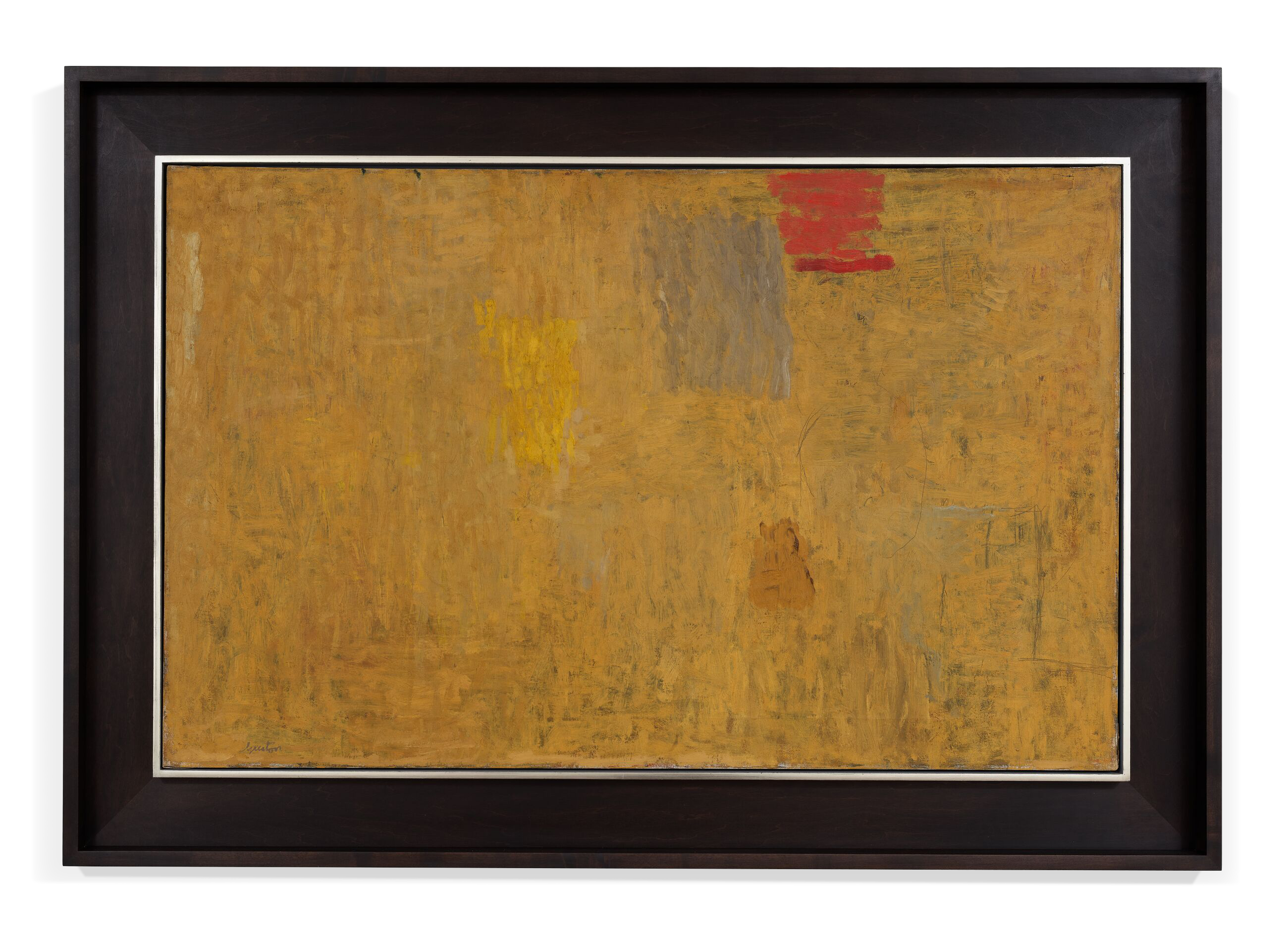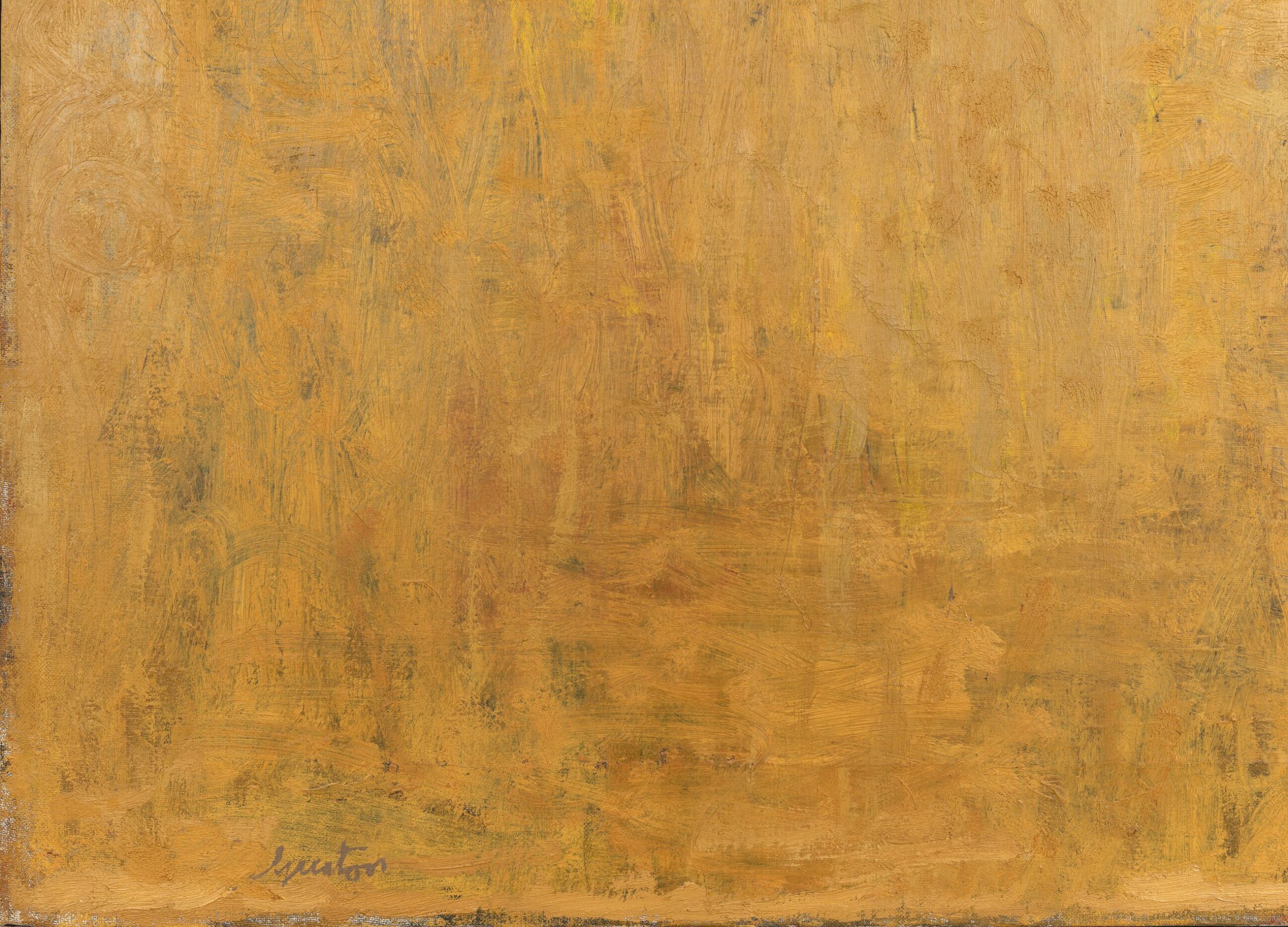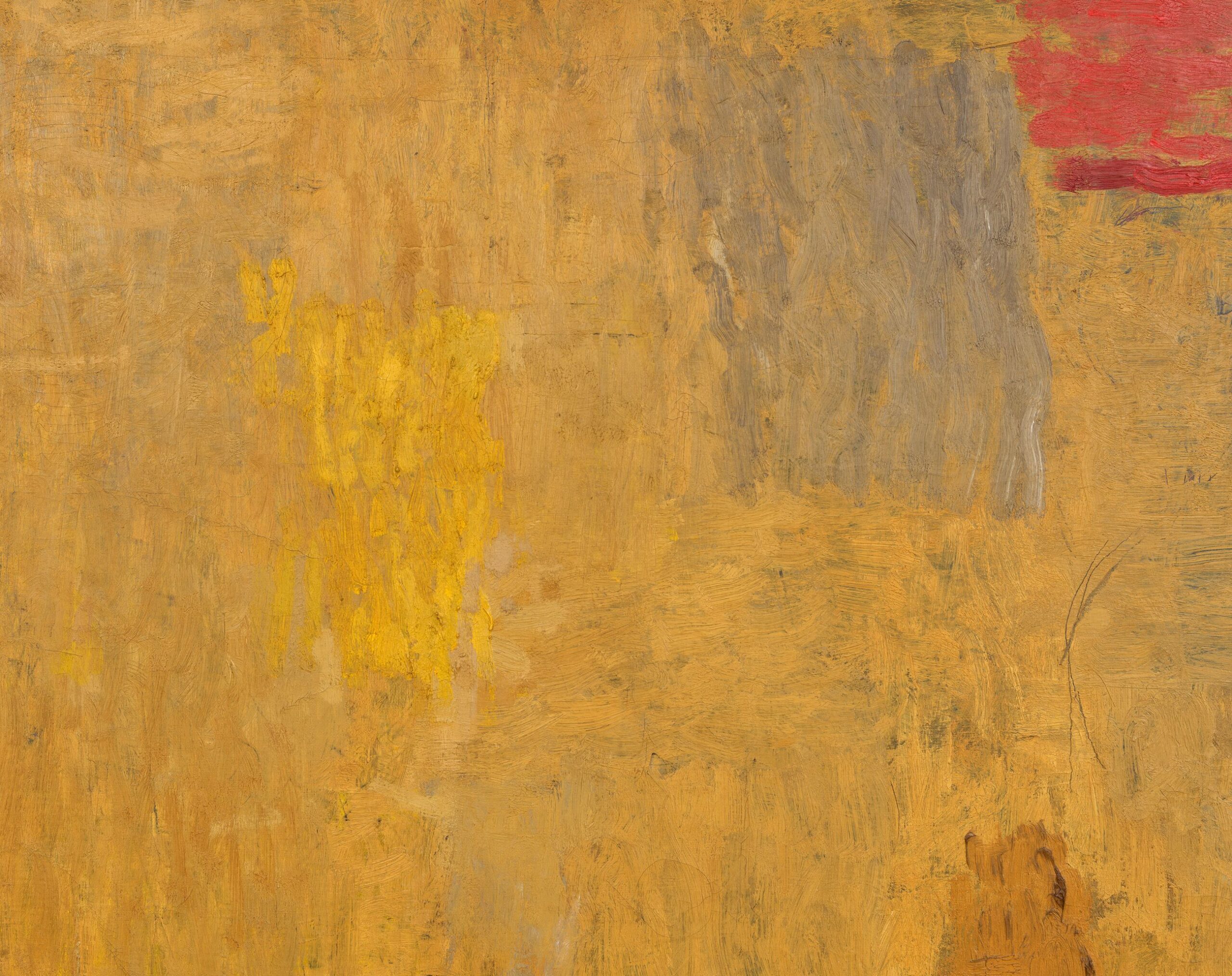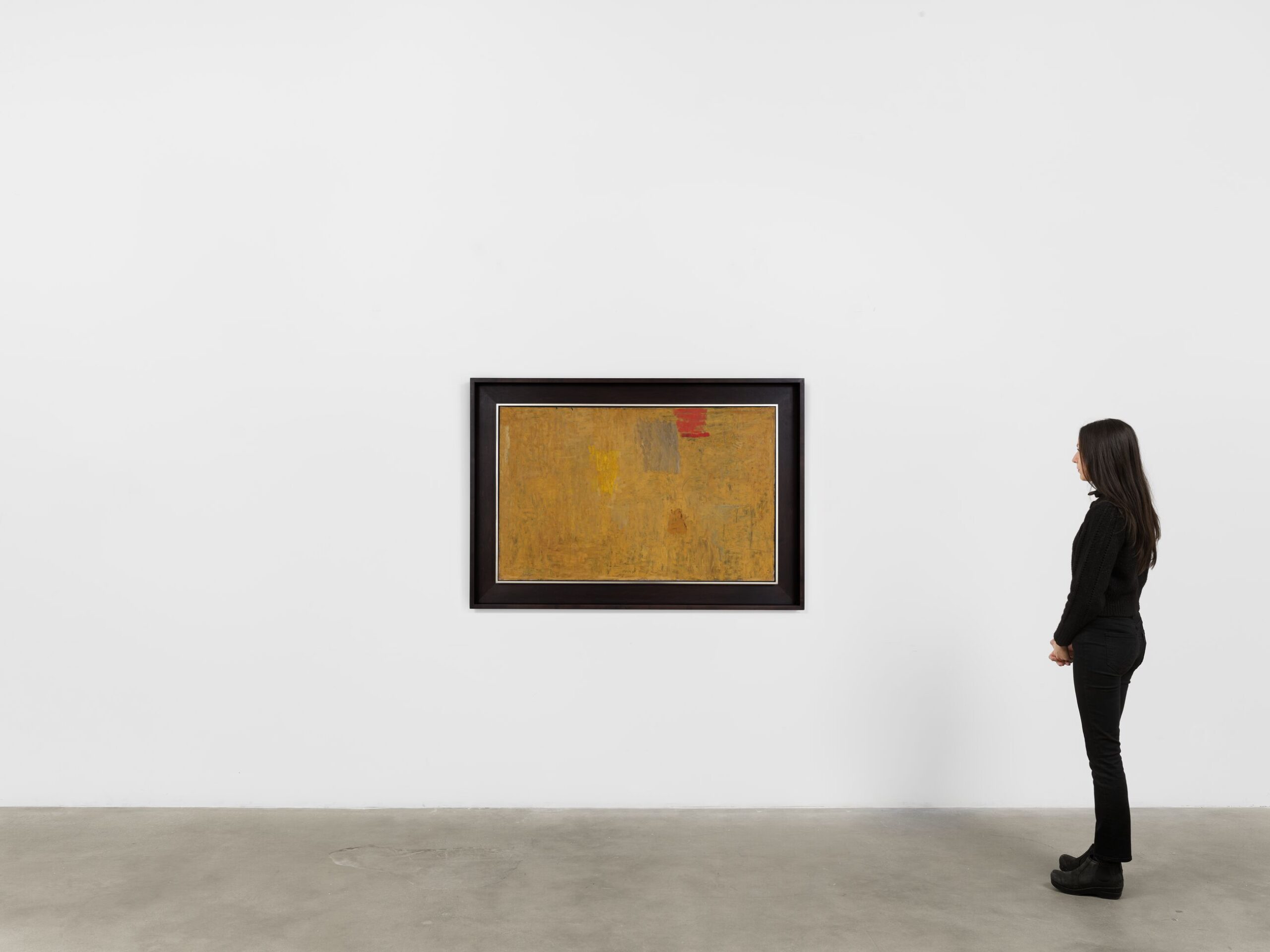
A rare example of Philip Guston’s early abstract vernacular, ‘Ochre Painting I’ (1951) is representative of the unique colors and variations of abstraction Guston experimented with in the early 1950s and represents a definitive moment in his oeuvre. Abandoning his figurative style for abstraction in the late 1940s, Guston approached the need to get ‘inside’ his work by adapting his proximity and relationship to the canvas. Working very close to the canvas without a predetermined plan, Guston applied paint in short, thick strokes using small brushes and pigments specifically ground to achieve a soft and luminous appearance. In ‘Ochre Painting I’, a subtle, overall grid emerges through the hatched yellow strokes, with three articulated sections of red, gray, and brown—it is ascetic and almost calligraphic in technique. Guston later described this period: ‘You felt as if you were driven into a corner against the wall, with no place to stand, just the place you occupied as if the act of painting was not making a picture…It was as if you had to prove to yourself that truly the act of creation was still possible.’ ‘Ochre Painting I’ was first exhibited at the Solomon R. Guggenheim Museum in Guston’s mid-career retrospective in 1962 alongside ‘Ochre Painting II’ (1951) and has been seen as the start of a continual line which can be drawn through the evolution of Guston’s career.
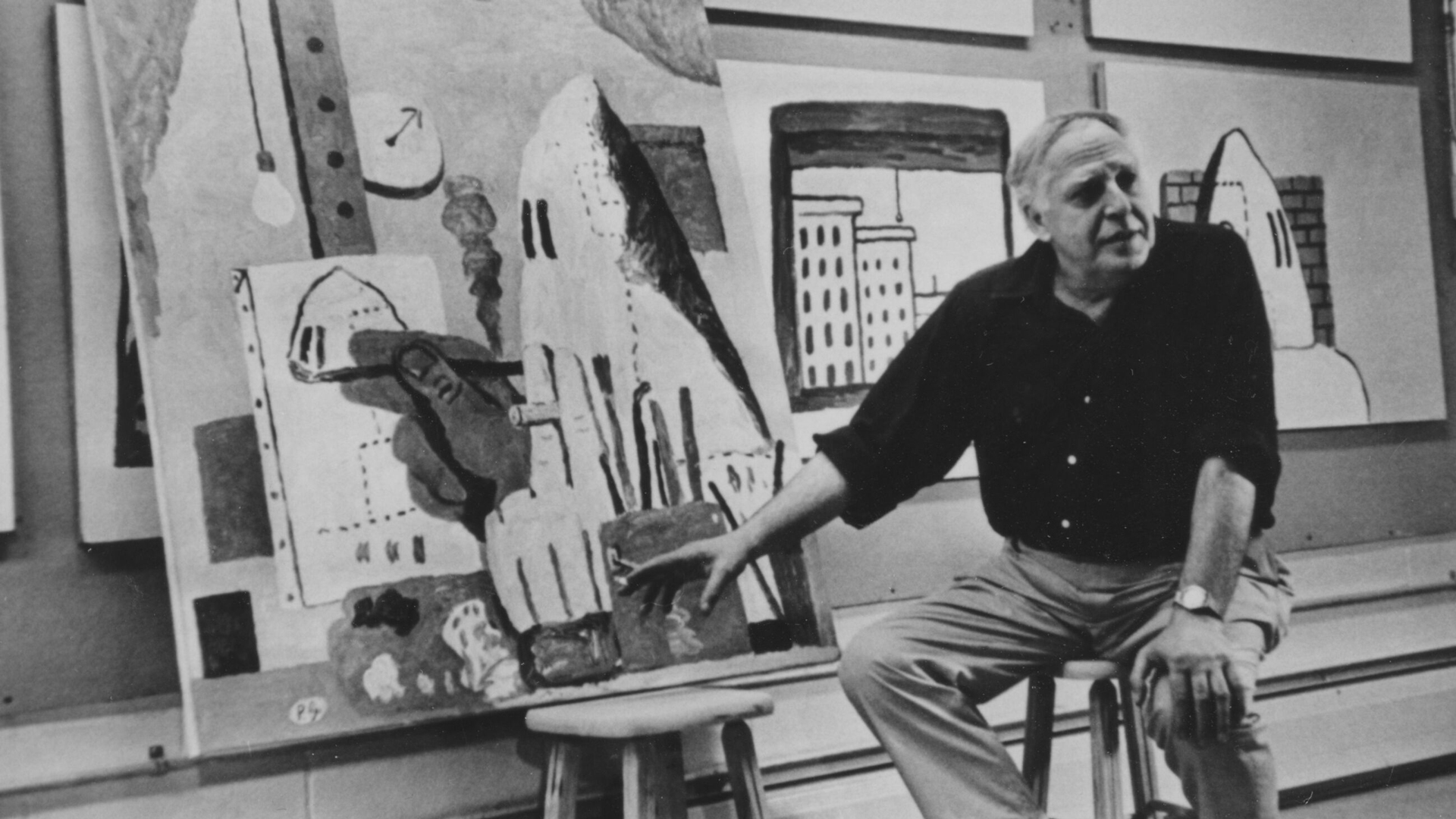
Born in Montreal, Canada in 1913, Philip Guston moved with his family to California in 1919. Except for briefly attending the Otis Art Institute in Los Angeles in 1930, he was completely self-taught and went on to become one of the great luminaries of 20th century art. From his early ties to social realism, the muralist movement, and abstract expressionism to the highly personal and allegorical expressions of his late figurative work, Guston’s commitment to producing art from genuine emotion and lived experience ensures its enduring impact. With a legendary career spanning a half century, Guston’s inimitable oeuvre continues to exert a powerful influence on younger generations of painters.
Artwork images © The Estate of Philip Guston. Photo: Sarah Muehlbauer
Portrait © The Estate of Philip Guston. Photo: Barbara Sproul



